2011 Coho Egg Collection For Ringwood Hatchery
As readers of this blog know, I have been doing my best to support the Metro East Anglers in their attempt to win funding to continue their work at the Ringwood Fish Culture Station. Last weekend I was finally able to attend one of their events – coho salmon egg collection at the Streetsville fish ladder.
I had registered for the event through email and when Darrell and I arrived I was not surprised to find I knew no one. It didn’t matter much as one thing I have learned in the last couple of years is that anglers don’t need to know names, they just need to share the passion.
In short order the process for the morning was outlined to me – we would be pulling coho salmon out of the fish ladder. If there were not enough fish in the ladder we would go down to the spillway and try netting more. If that didn’t work we would move on down the river. They were hoping to get 30 pairs of fish to collect from.
The Streetsville ladder is operated by the Credit River Anglers Association (CRAA), in association with the Ontario Ministry of Natural Resources (MNR), and it was two volunteers from the CRAA that were responsible for going in the ladder to net fish.
The first pool netted nothing, but the top of the ladder finally netted some cohos. Since I wasn’t really sure what needed to be done I stood back and took pictures with multiple cameras (I seemed to have elected for camera duty). As the fish were pulled out of the ladder they were sorted into two buckets – one for males, one for females.
As the fish ladder ran out of fish, far short of the quota that was hoped for, the process of milking them began. Again, I stood back and watched as those who were more experienced carried out their duties. It went by quickly and soon everyone was suiting up to hit the river in search of more fish.
The process of netting the fish and getting them back up to the sorting buckets was a little confusing at first. Eventually it was decided that multiple fish would be put in bags and then carried back up. There were quite a few fish being netted but they were rainbow trout and brown trout that were taken back for the CRAA to work with. No more cohos were found.
So the Ringwood portion of the day ended without the numbers of eggs they were hoping for. There will be more collection days as the hatchery tries to increase the number of eggs they have. I was happy to have been part of the process and to meet fellow anglers.
As most of the cars were packed up and headed back to the hatchery, Darrell and I decided to stay and watch the CCRA volunteers work with the rainbow and brown trout that had been put aside in a pen.
First up were the rainbows to get measured and tagged.
There were some beautiful fish being pulled out of the pen – first rainbows and then browns. I’m always thrilled to see big healthy fish and this process was something I was happy to be part of. Joe (wearing the hat) was kind enough to hold up some fish for pictures and was a great teacher, explaining to me what he was doing with the fish and why. His passion for the fish was obvious.
The browns were being kept to collect eggs from. There turned out to be far more females than males, including one female that had everyone convinced it was a male due to the kype. It was only when the milking process produced eggs that we all realized we were wrong.
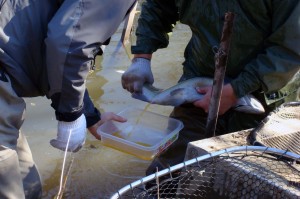
The milking process. This was the best picture I could get to show the stream of eggs coming from the female. It was remarkable to watch.
Once we were finished milking the browns I got to watch the eggs get water-hardened and pester Joe with more questions about the process. With the fish released and everything tidied up it was finally time to go home.
I have spent the last two years focused on fishing, and that weekend was the first real chance I had to get a look at fisheries management and the work that goes into keeping fish in the water for people like me to catch. I learned so much and will do my best to participate more in the future. Thank you to the MEA, Ringwood, MNR and CRAA for allowing me such an opportunity.
argosgirl
Latest posts by argosgirl (see all)
- Open Water Season Begins - March 16, 2024
- A Day Trip To South River - March 2, 2024
- New Year’s Camping At MacGregor Point - February 24, 2024
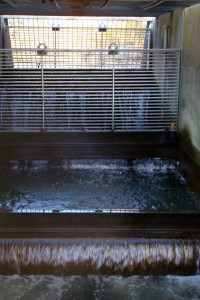
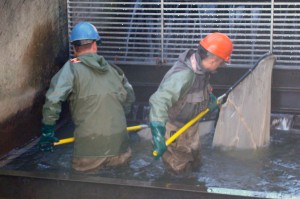
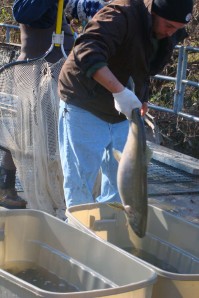
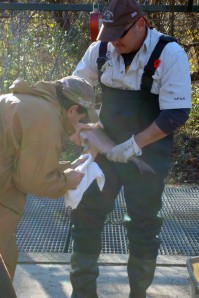
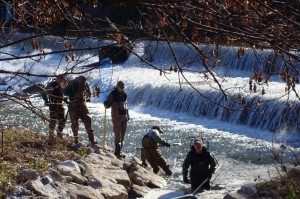
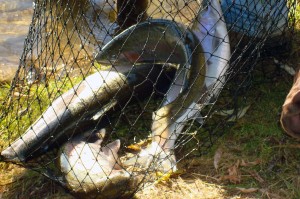
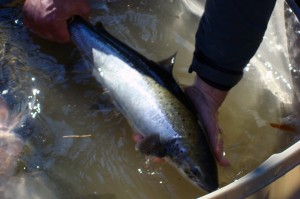
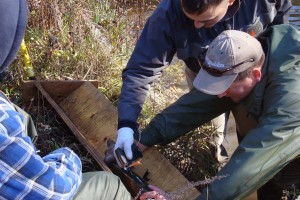
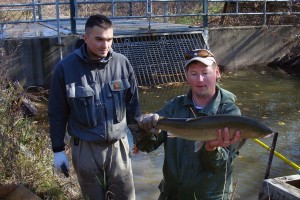
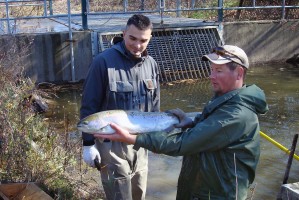
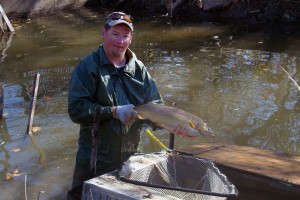


Its awesome that your volunteering your time into keeping fish in the water for us to catch. Keep up the great work!
Thanks! I’ve been enjoying every minute of it. There’s so much to learn and do – it’s been a wonderful experience.